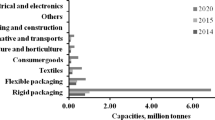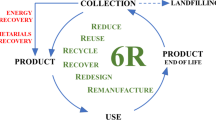Abstract
Extrusion-based 3D food printers are the most widely used 3D food-printing machines. Among these, screw-based 3D food printers have insufficient knowledge of printability compared to other types of extrusion-based printers. This study aimed to analyze the extrudability and shape stability immediately after printing from the viewpoint of mechanics using a screw-based 3D food printer. A paste comprising pumpkin flakes and water was used as the model food ink. The results show that 3D printing can be stable in the flake content of 20.0–28.6 wt%. When the pumpkin flake content was 18.2 wt% or lower, the 3D-printed food was flattened, and when the flake content was 30.8 wt% or higher, the paste was difficult to extrude from the nozzle. The results suggest that extrudability is mainly affected by the loss tangent of the paste and the balance between the apparent viscosity and inner nozzle pressure. Moreover, the main factors for shape stability immediately after printing were Young’s modulus and the balance between the stress applied to the printed food owing to its weight and the yield stress of the paste. Particularly, it was found that the screw-based 3D food printer has a unique characteristic in controlling extrudability compared to other extrusion-based printers because the inner nozzle pressure tends to fluctuate depending on the apparent paste viscosity. The findings of this study provide new fundamental insights into screw-based 3D food printers from viewpoints of fluid and structural mechanics.











Similar content being viewed by others
Data Availability
The datasets generated during the current study are available in the manuscript and supplementary information.
Abbreviations
- \(a\) :
-
Screw pitch (m)
- \({D}_{n}\) :
-
Inner diameter of the nozzle (m)
- \({D}_{s}\) :
-
Outer diameter of screw (m)
- \({d}_{s}\) :
-
Outer diameter of screw shaft (m)
- \(E\) :
-
Young’s modulus (Pa)
- \(f\) :
-
Frequency (Hz)
- \(G^{\prime}\) :
-
Storage modulus (Pa)
- \(G^{\prime}({\dot{\gamma }}_{E})\) :
-
Storage modulus during extrusion (Pa)
- \(G^{\prime\prime}\) :
-
Loss modulus (Pa)
- \(G^{\prime\prime}({\dot{\gamma }}_{E})\) :
-
Loss modulus during extrusion (Pa)
- \(g\) :
-
Acceleration due to gravity (m/s2)
- \({H}_{n}\) :
-
Initial nozzle height (m)
- \(\overline{h }\) :
-
Average height of 3D-printed food (m)
- \({h}_{set}\) :
-
Set height of the 3D-printed food (m)
- \({h}_{theo}\) :
-
Theoretical height of 3D-printed food (m)
- \(K\) :
-
Consistency index (Pa·sn)
- \({L}_{b}\) :
-
Bottom length of 3D-printed food (m)
- \({L}_{b, set}\) :
-
Set bottom length of 3D-printed food (m)
- \({L}_{t}\) :
-
Top length of the 3D-printed food (m)
- \({L}_{t, set}\) :
-
Set-top length of the 3D-printed food (m)
- \({L}_{b}/{L}_{t}\) :
-
Degree of flatness of 3D-printed food (-)
- \({({L}_{b}/{L}_{t})}_{theo}\) :
-
Theoretical degree of flatness of 3D-printed food (-)
- \({L}_{n}\) :
-
Nozzle length (m)
- \(m\) :
-
Weight of 3D-printed food (kg)
- \({m}_{p}\) :
-
Weight of pumpkin paste (kg)
- \({m}_{w}\) :
-
Weight of purified water (kg)
- \(n\) :
-
Power exponent (-)
- \({P}_{atm}\) :
-
Atmospheric pressure (Pa)
- \({P}_{n}\) :
-
Inner nozzle pressure (Pa)
- \(\Delta P\) :
-
Differential pressure (Pa)
- \(T\) :
-
Time required to print one 3D-printed food (s)
- \(\mathrm{tan}\,\delta\) :
-
Loss tangent (-)
- \({\mathrm{tan}\,\delta }_{min}\) :
-
Loss tangent in the region of sufficiently low strain (-)
- \(\mathrm{tan}\,\delta ({\gamma }_{E})\) :
-
Loss tangent during nozzle extrusion (-)
- \(\overline{U }\) :
-
Average extrusion velocity (m/s)
- \({U}_{max}\) :
-
Maximum extrusion velocity (m/s)
- \({U}_{p}\) :
-
Printing speed (Stage movement speed) (m/s)
- \({V}_{p}\) :
-
Volume of pumpkin paste (m3)
- \(\gamma\) :
-
Strain (-)
- \({\gamma }_{E}\) :
-
Strain during nozzle extrusion (-)
- \(\dot{\gamma }\) :
-
Shear rate (s−1)
- \({\dot{\gamma }}_{E}\) :
-
Shear rate during nozzle extrusion (s−1)
- \(\eta\) :
-
Apparent viscosity (Pa·s)
- \(\eta ({\dot{\gamma }}_{E})\) :
-
Apparent viscosity during nozzle extrusion (Pa)
- \(\lambda\) :
-
Deformation amount of 3D-printed food (m)
- \(\mu\) :
-
Viscosity coefficient (Pa·s)
- \({\rho }_{b,p}\) :
-
Bulk density of pumpkin paste (kg/m3)
- \({\rho }_{w}\) :
-
Density of purified water (kg/m3)
- \({\sigma }_{p}\) :
-
Stress applied to the 3D-printed food owing to its weight (Pa)
- \(\tau\) :
-
Shear stress (Pa)
- \({\tau }_{0}\) :
-
Yield stress (Pa)
- \(\omega\) :
-
Number of revolutions of screw (rad/s)
References
Chen, J., Sun, H., Mu, T., Blecker, C., Richel, A., Richard, G., Jacquet, N., Haubruge, E., & Goffin, D. (2022a). Effect of temperature on rheological, structural, and textural properties of soy protein isolate pastes for 3D food printing. Journal of Food Engineering, 323, 110917. https://doi.org/10.1016/j.jfoodeng.2021.110917
Chen, X., Zhang, M., Teng, X., & Mujumdar, A. S. (2022b). Internal structure design for improved shape fidelity and crispness of 3D printed pumpkin-based snacks after freeze-drying. Food Research International, 157, 111220. https://doi.org/10.1016/j.foodres.2022.111220
Cheng, Y., Fu, Y., Ma, L., Yap, P. L., Losic, D., Wang, H., & Zhang, Y. (2022). Rheology of edible food inks from 2D/3D/4D printing, and its role in future 5D/6D printing. Food Hydrocolloids, 132, 107855. https://doi.org/10.1016/j.foodhyd.2022.107855
Darfour, B., Wilson, D. D., Ofosu, D. O., & Ocloo, F. C. K. (2012). Physical, proximate, functional and pasting properties of flour produced from gamma irradiated cowpea (Vigna unguiculata, L. Walp). Radiation Physics and Chemistry, 81(4), 450–457. https://doi.org/10.1016/j.radphyschem.2011.12.015
Derossi, A., Paolillo, M., Verboven, P., Nicolai, B., & Severini, C. (2022). Extending 3D food printing application: Apple tissue microstructure as a digital model to create innovative cereal-based snacks. Journal of Food Engineering, 316, 110845. https://doi.org/10.1016/j.jfoodeng.2021.110845
Fredrickson, A., & Bird, R. B. (1958). Non-Newtonian Flow in Annuli. Industrial & Engineering Chemistry, 50, 347–352.
Gholamipour-Shirazi, A., Kamlow, M.-A., Norton, I. T., & Mills, T. (2020). How to Formulate for Structure and Texture via Medium of Additive Manufacturing-A Review. Foods, 9(4). https://doi.org/10.3390/foods9040497
Guo, C., Zhang, M., & Bhandari, B. (2019a). Model Building and Slicing in Food 3D Printing Processes: A Review. Comprehensive Reviews in Food Science and Food Safety, 18(4), 1052–1069. https://doi.org/10.1111/1541-4337.12443
Guo, C., Zhang, M., & Bhandari, B. (2019b). A comparative study between syringe-based and screw-based 3D food printers by computational simulation. Computers and Electronics in Agriculture, 162, 397–404. https://doi.org/10.1016/j.compag.2019.04.032
Hao, L., Mellor, S., Seaman, O., Henderson, J., Sewell, N., & Sloan, M. (2010). Material characterisation and process development for chocolate additive layer manufacturing. Virtual and Physical Prototyping, 5(2), 57–64. https://doi.org/10.1080/17452751003753212
Horiuchi, M., Akachi T., Kawakami M., & Furukawa H. (2021). Texture Design and Its Effect of Soft Foods Suitable for Nursing Foods Using Macroscopic 3D Structures Printed by 3D Food Printer. Japan Journal of Food Engineering, 22(4), 119–134. https://doi.org/10.11301/jsfe.21599
Jonkers, N., van Dommelen, J. A. W., & Geers, M. G. D. (2020). Experimental characterization and modeling of the mechanical behavior of brittle 3D printed food. Journal of Food Engineering, 278, 109941. https://doi.org/10.1016/j.jfoodeng.2020.109941
Kadival, A., Kour, M., Meena, D., & Mitra, J. (2022). Extrusion-based 3D food printing: printability assessment and improvement techniques. Food and Bioprocess Technology, 16, 987–1008. https://doi.org/10.1007/s11947-022-02931-z
Kanda, Y. (2013). Investigation of the freely available easy-to-use software ‘EZR’ for medical statistics. Bone Marrow Transplantation, 48(3), 452–458. https://doi.org/10.1038/bmt.2012.244
Khalil, S., & Sun, W. (2007). Biopolymer deposition for freeform fabrication of hydrogel tissue constructs. Materials Science and Engineering: C, 27(3), 469–478. https://doi.org/10.1016/j.msec.2006.05.023
Köprüalan, Ö., Altay, Ö., Bodruk, A., & Kaymak-Ertekin, F. (2021). Effect of hybrid drying method on physical, textural and antioxidant properties of pumpkin chips. Journal of Food Measurement and Characterization, 15(4), 2995–3004. https://doi.org/10.1007/s11694-021-00866-1
Larsson, M., & Duffy, J. (2013). An Overview of Measurement Techniques for Determination of Yield Stress. Annual Transactions of the Nordic Rheology Society, 21, 125–138.
Liu, Z., Zhang, M., Bhandari, B., & Wang, Y. (2017). 3D printing: Printing precision and application in food sector. Trends in Food Science & Technology, 69, 83–94. https://doi.org/10.1016/j.tifs.2017.08.018
Liu, Z., Zhang, M., Bhandari, B., & Yang, C. (2018). Impact of rheological properties of mashed potatoes on 3D printing. Journal of Food Engineering, 220, 76–82. https://doi.org/10.1016/j.jfoodeng.2017.04.017
Ma, Y., & Zhang, L. (2022). Formulated food inks for extrusion-based 3D printing of personalized foods: a mini review. Current Opinion in Food Science, 44, 100803. https://doi.org/10.1016/j.cofs.2021.12.012
Nei, D., & Sasaki, T. (2023). Applicability of defatted soybean flours to 3D food printer: Effect of milling methods on printability and quality of 3D-printed foods. Journal of Food Engineering, 337, 111237. https://doi.org/10.1016/j.jfoodeng.2022.111237
Pan, Y., Sun, Q., Liu, Y., Wei, S., Xia, Q., Zheng, O., Liu, S., Ji, H., Deng, C., & Hao, J. (2021). The relationship between rheological and textural properties of shrimp surimi adding starch and 3D printability based on principal component analysis. Food Science & Nutrition, 9(6), 2985–2999. https://doi.org/10.1002/fsn3.2257
Pereira, T., Barroso, S., & Gil, M. M. (2021). Food texture design by 3d printing: A review. Foods, 10(2), 320.https://doi.org/10.3390/foods10020320
Rahman, J. M. H., Shiblee, M. N. I., Ahmed, K., Khosla, A., Kawakami, M., & Furukawa, H. (2020). Rheological and mechanical properties of edible gel materials for 3D food printing technology. Heliyon, 6(12). https://doi.org/10.1016/j.heliyon.2020.e05859
Vancauwenberghe, V., Delele, M. A., Vanbiervliet, J., Aregawi, W., Verboven, P., Lammertyn, J., & Nicolaï, B. (2018). Model-based design and validation of food texture of 3D printed pectin-based food simulants. Journal of Food Engineering, 231, 72–82. https://doi.org/10.1016/j.jfoodeng.2018.03.010
Wang, L., Zhang, M., Bhandari, B., & Yang, C. (2018). Investigation on fish surimi gel as promising food material for 3D printing. Journal of Food Engineering, 220, 101–108. https://doi.org/10.1016/j.jfoodeng.2017.02.029
Wilson, A., Anukiruthika, T., Moses, J. A., & Anandharamakrishnan, C. (2020). Customized Shapes for Chicken Meat-Based Products: Feasibility Study on 3D-Printed Nuggets. Food and Bioprocess Technology, 13(11), 1968–1983. https://doi.org/10.1007/s11947-020-02537-3
Zheng, Z., Zhang, M., & Liu, Z. (2021). Investigation on evaluating the printable height and dimensional stability of food extrusion-based 3D printed foods. Journal of Food Engineering, 306, 110636. https://doi.org/10.1016/j.jfoodeng.2021.110636
Zhu, S., Stieger, M. A., van der Goot, A. J., & Schutyser, M. A. I. (2019). Extrusion-based 3D printing of food pastes: Correlating rheological properties with printing behaviour. Innovative Food Science & Emerging Technologies, 58, 102214. https://doi.org/10.1016/j.ifset.2019.102214
Acknowledgements
The authors wish to thank Tomoko Sasaki (Institute of Food Research, NARO) for the use of the rheometer, Kunihiko Uemura (Institute of Food Research, NARO) for the use of the texture meter, and Hiroko Kambara and Rie Ito (Institute of Food Research, NARO) for their experimental support.
Funding
This work was supported by Cabinet Office, Government of Japan, Moonshot Research and Development Program for Agriculture, Forestry and Fisheries (funding agency: Bio-oriented Technology Research Advancement Institution), Grant Number JPJ009237.
Author information
Authors and Affiliations
Contributions
Takumi Umeda: Conceptualization, Methodology, Investigation, Writing – review & editing. Hiroyuki Kozu: Conceptualization, Methodology, Validation, Formal analysis, Investigation, Data Curation, Writing – original draft. Isao Kobayashi: Conceptualization, Resources, Writing – review & editing, Supervision, Project administration, Funding acquisition. Takumi Umeda and Hiroyuki Kozu contributed equally to this work and should be considered co-first authors.
Corresponding author
Ethics declarations
Conflict of Interest
The authors declare no competing interests.
Additional information
Publisher's Note
Springer Nature remains neutral with regard to jurisdictional claims in published maps and institutional affiliations.
Supplementary Information
Below is the link to the electronic supplementary material.
Supplementary file1 (MP4 5203 KB)
Supplementary file2 (MP4 14890 KB)
Supplementary file3 (MP4 4865 KB)
Rights and permissions
Springer Nature or its licensor (e.g. a society or other partner) holds exclusive rights to this article under a publishing agreement with the author(s) or other rightsholder(s); author self-archiving of the accepted manuscript version of this article is solely governed by the terms of such publishing agreement and applicable law.
About this article
Cite this article
Umeda, T., Kozu, H. & Kobayashi, I. Analysis of Pumpkin Paste Printability for Screw-Based 3D Food Printer. Food Bioprocess Technol 17, 188–204 (2024). https://doi.org/10.1007/s11947-023-03116-y
Received:
Accepted:
Published:
Issue Date:
DOI: https://doi.org/10.1007/s11947-023-03116-y




